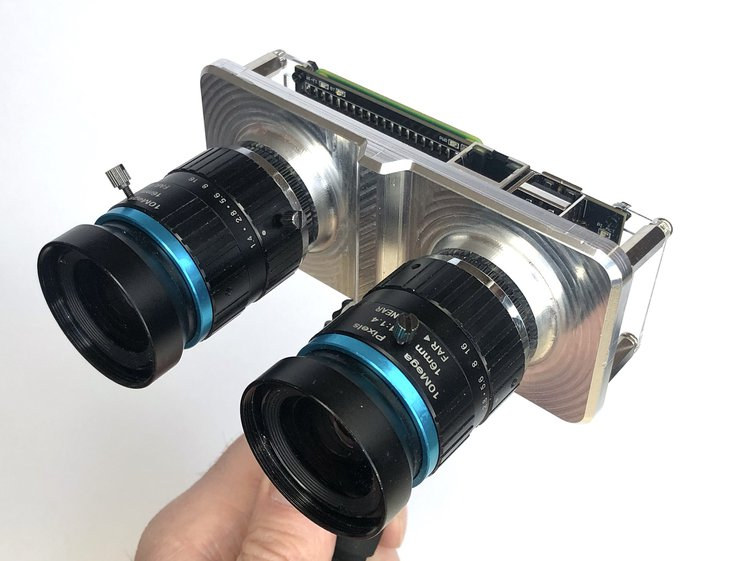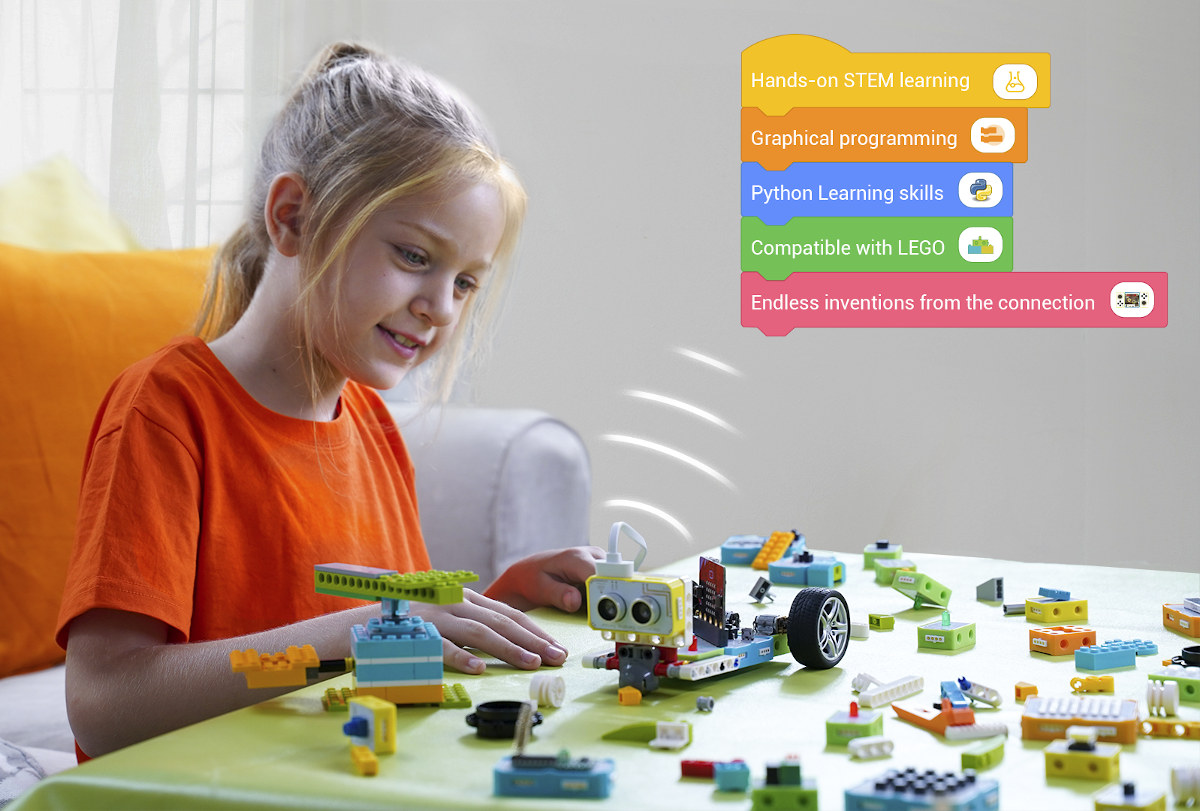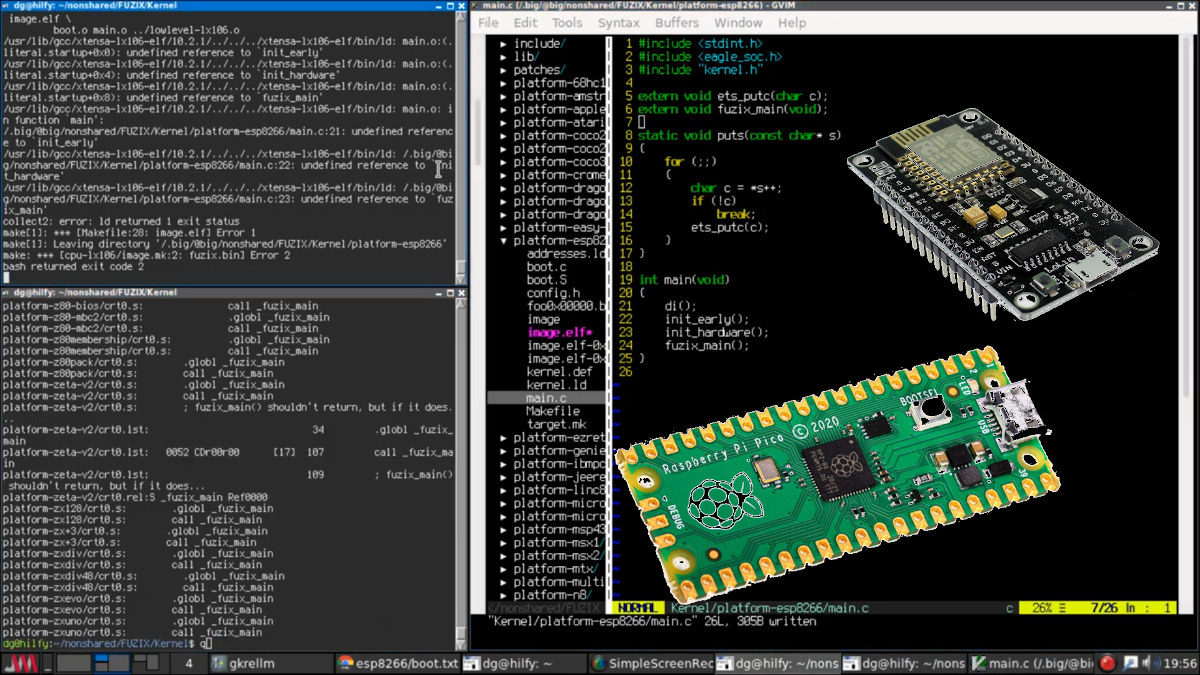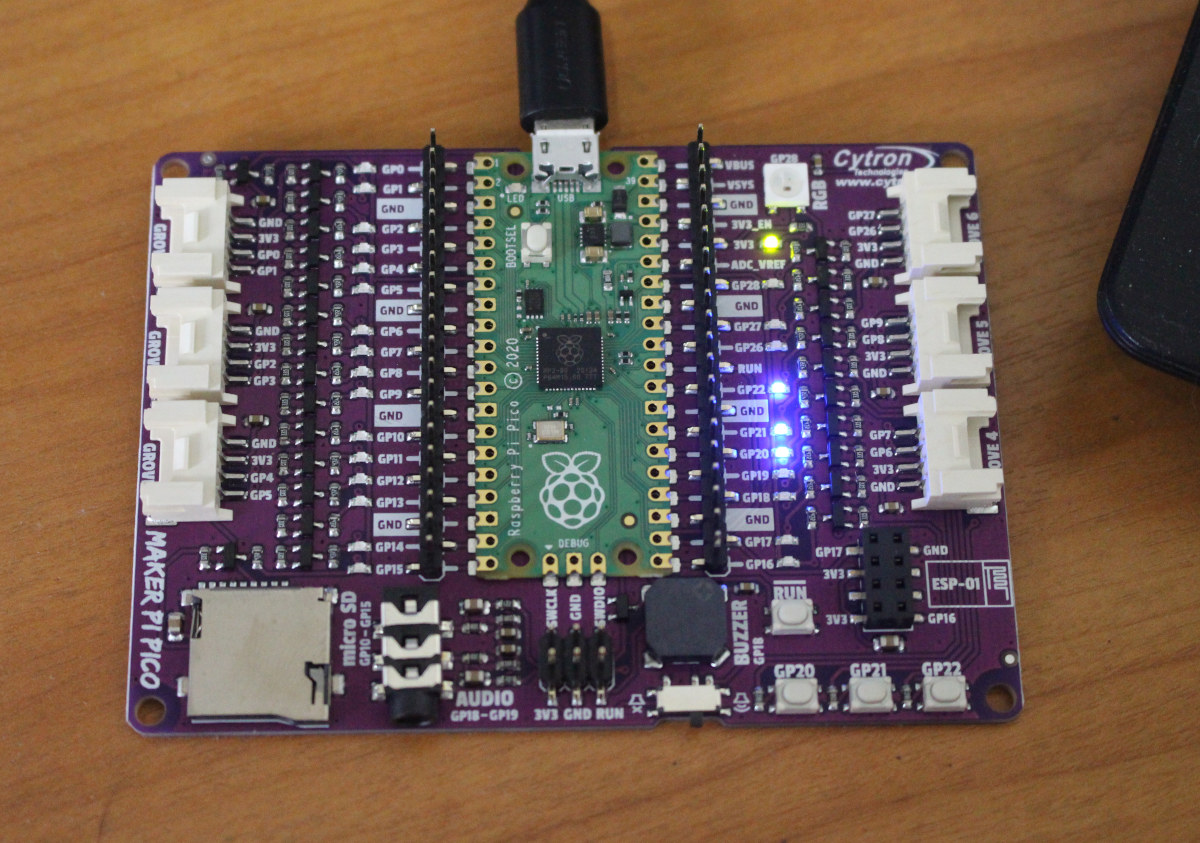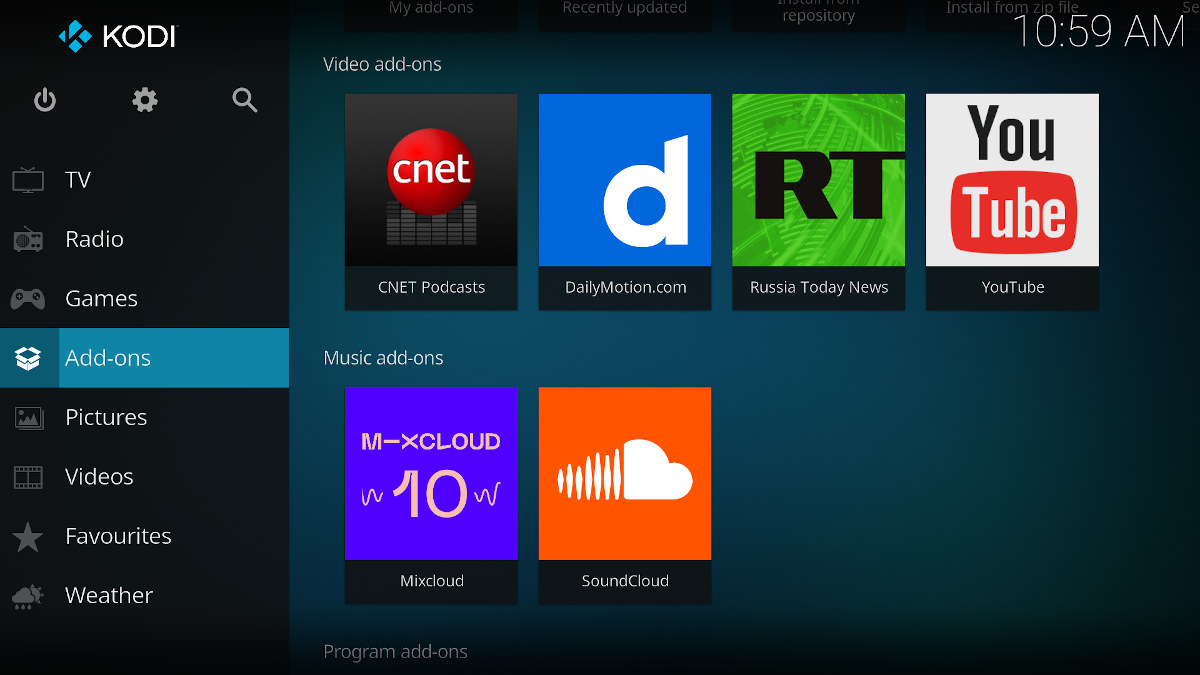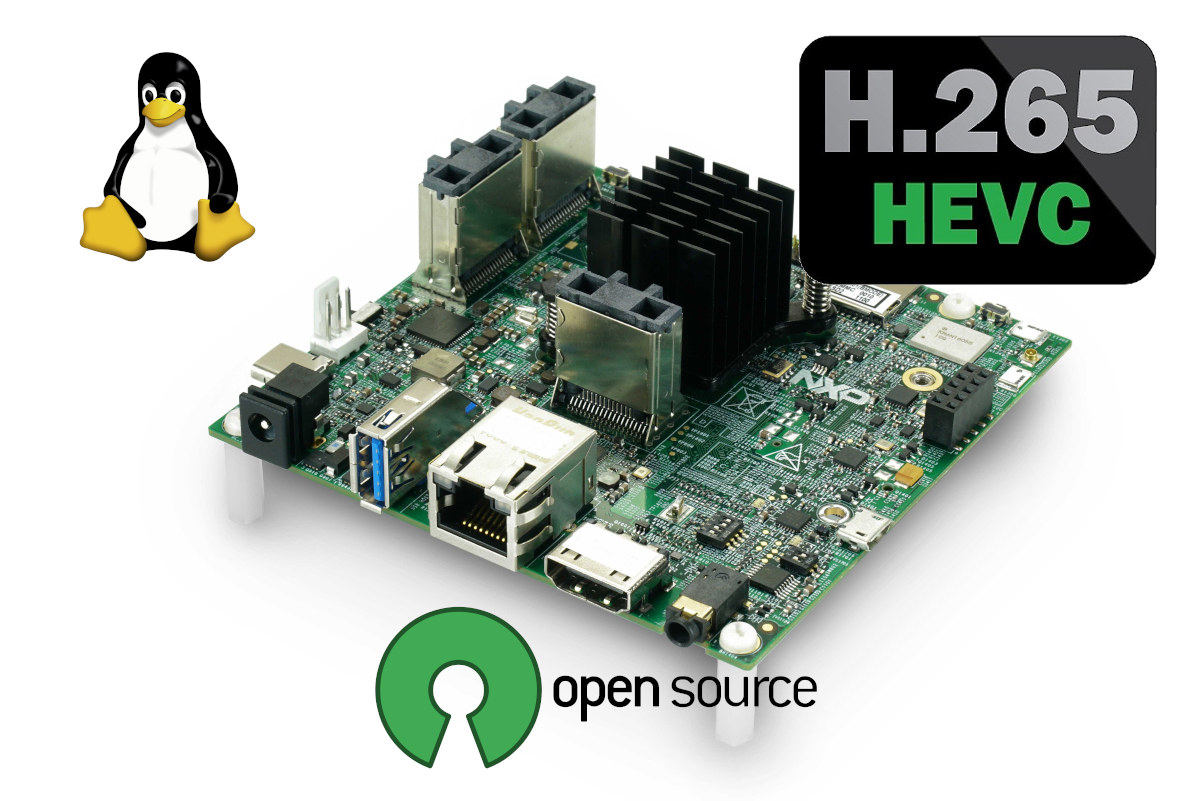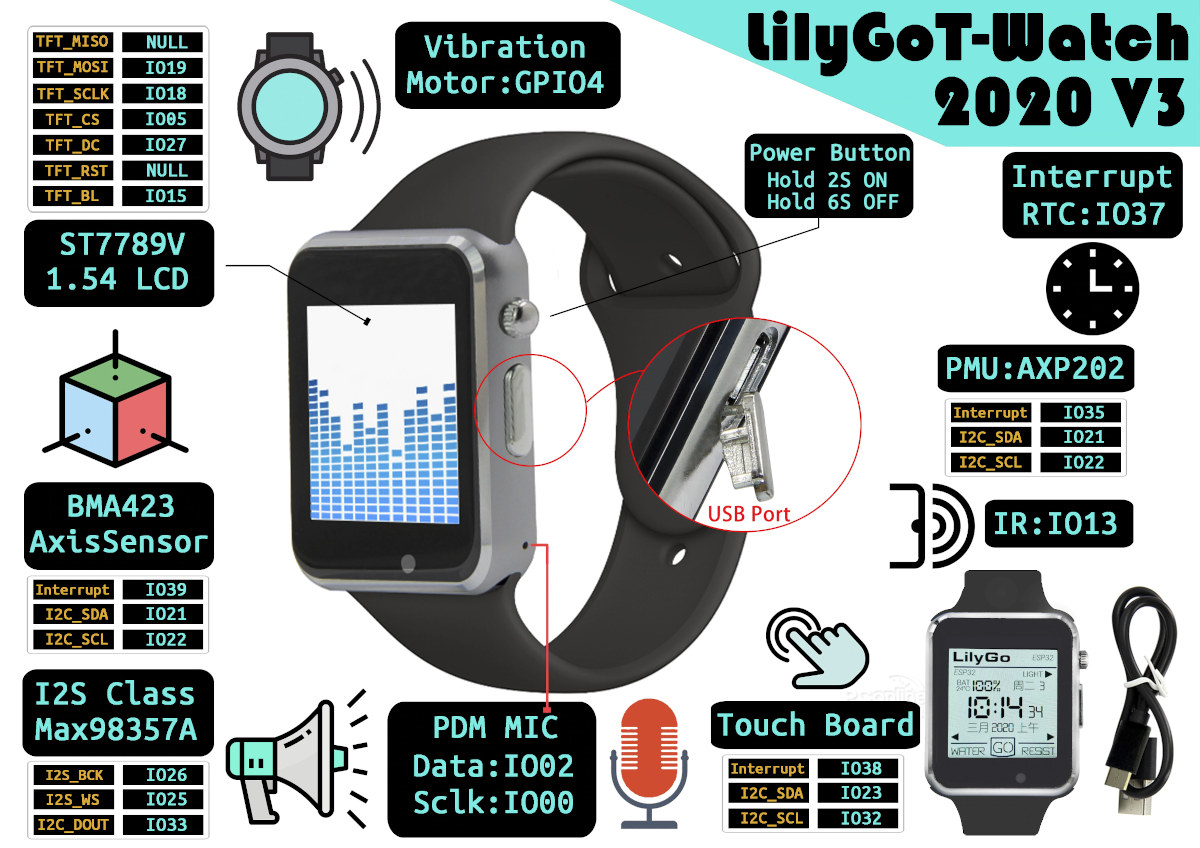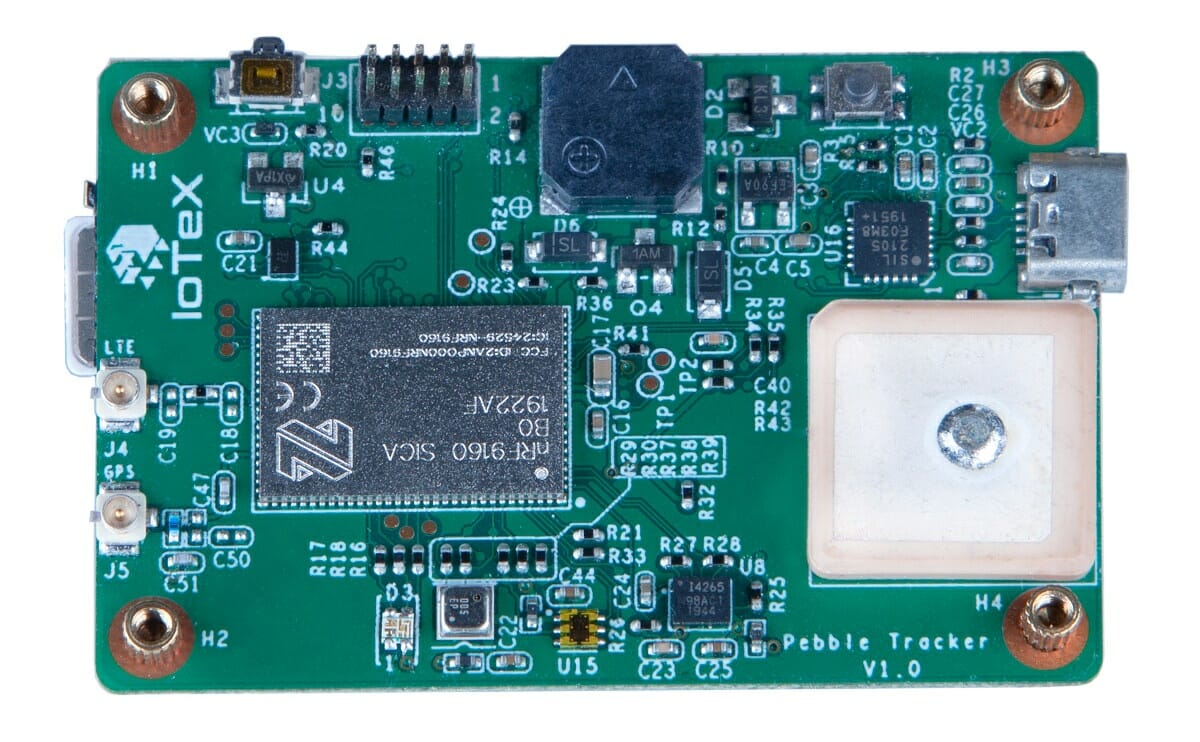StereoPi stereoscopic camera based on Raspberry Pi Compute Module 3 was introduced in late 2019 on Crowd Supply. The camera can record 3D video, create 3D depth maps with OpenCV, and benefits from the Raspberry Pi software ecosystem. The developers are now back with an upgraded model. StereoPi v2 comes with many of the same features, but as it is based on Raspberry Pi CM4 (Compute Module 4) it offers better performance, Gigabit Ethernet, Wifi & Bluetooth connectivity out of the box, while other features like PoE, TFT screen, shot button, etc.. are optional. StereoPi v2 specifications: Supported SoM – Raspberry Pi CM4 or CM4Lite modules Storage – MicroSD card socket Video Output – Micro HDMI port Camera I/F – 2x MIPI CSI camera connector plus “hackable camera lines” Networking – Gigabit Ethernet RJ45 port, plus optional WiFi 5 and Bluetooth 5.0 on Raspberry Pi CM4 module USB – 2x […]
Crowbits magnetic blocks for STEM Education work with Arduino, Micro:bit, ESP32, and Raspberry Pi (Crowdfunding)
Elecrow develops and manufactures electronics products for the maker market, and in recent years entered the STEM education market with products such as CrowPi2 Raspberry Pi 4 education laptop that I reviewed last year. The laptop integrates plenty of electronics modules, and students can learn Scratch visual programming as well as Python programming with the educational software running on the laptop. The company has now launched Crowbits magnetic electronic blocks for STEM education, and compatible with Arduino, ESP32, Raspberry Pi, and Micro:bit boards. There are over 80 programmable electronic magnetic modules and Lego bricks, with three different sizes ( large, middle, and small modules) of different colors with blue used for power control and logic control, green for output, yellow for input, and orange for advanced programming. Out of the 80+ modules, around 30 can be used without programming at all. Elecrow provides 5 kits to let users learn basic […]
Fuzix Unix-like operating system ported to Raspberry Pi Pico and ESP8266
The Raspberry Pi Pico is not compatible with Linux, but now supports another Unix-like operating system known as Fuzix. Alan Cox’s Fuzix is a Unix-like operating system for older devices with less performance capacity. David Given’s two recent posts have brought to the attention about the operating system’s compatibility with ESP8266 MCU and Raspberry Pi Pico. Fuzix operating system has a kernel which is the central core of the system. Also, it has a C compiler and a set of core applications similar to the UNIX filesystem. The Raspberry Pi Pico port comes with many benefits like a well-structured Unix filesystem with its compatibility for SD cards through the SPI interface. Hence, supporting the Fuzix operating system. The full set of Fuzix binaries is available through a serial console to UART0. Porting Fuzix to ESP8266 The post on “Porting Fuzix to the ESP8266” addresses the MCU’s support for the Fuzix […]
Maker Pi Pico STEM board mini review with CircuitPython
In my early list of third-party Raspberry Pi RP2040 boards, I shortly mentioned Cytron Maker Pi Pico baseboard for Raspberry Pi Pico that exposes all pins via female headers, includes LEDs for all GPIOs pin, six Grove connectors, three user push-buttons, one RGB LED, a piezo buzzer, an audio jack, a MicroSD card, and an ESP-01 socket to add WiFi connectivity. The beta version sold for $5, and at the time I missed that included Raspberry Pi Pico board as well, so basically you got a free baseboard. The Malaysian company has now sent me a review sample to play around with, so let’s have a closer at the hardware and code samples for the board. Maker Pi Pico Unboxing and Specifications I received the board in Cytron package together with a pinout diagram for Raspberry Pi Pico, and we can see the latter is already soldered to Maker Pi […]
Kodi 19 “Matrix” released with AV1, HDR, tvOS support
Kodi is an open-source media center that was initially designed for the XBOX game console, but was quickly ported to other platforms such as Windows and Linux, and eventually to low-cost Android TV boxes and single board computers such as Raspberry Pi. A new stable release of the software comes out every couple of years, and the developers have just announced the release of Kodi 19 “Matrix” a little over two years after Kodi 18 “Leia” release. The default user interface may look similar to the one for Kodi 18, but there have been many changes over the last two years with some of the highlights including: Skin/Look-and-Feel Screen redesign, especially for music with new metadata displays and changes to playlist views New “now playing” view Artwork and image file improvements Video Playback AV1 software decoding Windows 10 – HLG HDR and static HDR10 playback Android – Static HDR10 and […]
Open-source H.265/HEVC Hantro G2 decoder driver added to NXP i.MX 8M in Linux
Getting open-source multimedia drivers on Arm Linux is one of the most difficult tasks, that’s why there’s no much talk about open-source GPU drivers for 2D & 3D graphics acceleration, but work on video hardware decoding and encoding is also a challenge. We’ve previously seen Bootlin work on Cedrus open-source driver for Allwinner VPU (Video Processing Unit), but Collabora has been working on open-source drivers for VeriSilicon’s Hantro G1 and G2 VPU found in some Rockchip, NXP, and Microchip processors. The company previously managed to have Hantro G1 open-source driver for JPEG, MPEG-2, VP8, and H.264 codecs, but H.265/HEVC relies on Hantro G2, and the patch for H.265 hardware video decoding on NXP i.MX 8M Quad has just been submitted to mainline Linux. Benjamin Gaignard explains more in his commit message: The IMX8MQ got two VPUs but until now only G1 has been enabled This series aim to add the […]
TTGO T-Watch-2020 V3 ESP32 watch adds microphone for voice control
Lilygo TTGO T-Watch-2020 is a thin, ESP32 smartwatch programmable with Arduino that was introduced last year. The WiFi and Bluetooth-connected watch is equipped with a 1.54-inch LCD capacitive touch screen, a Class-D amplifier, buzzer, accelerometer, RTC, and a battery. The watch is one of the top-selling devices on Lilygo’s Aliexpress store, and they must have had requirements for voice control, so the company has now launched TTGO T-Watch-2020 V3 based on the same design but adding a PDM microphone. As far as I can TTGO T-Watch-2020 V3 specifications are the same as last year’s model, except for the microphone: SoC – Espressif ESP32 dual-core wireless processor with 520KB SRAM System Memory – 8MB PSRAM Storage – 16MB QSPI flash Display – 1.54-inch LCD capacitive touch screen Audio – Max98357 Class-D amplifier, buzzer/speaker, PDM microphone Connectivity – 802.11b/g/n WiFi 4 and Bluetooth 4.x/5.1 via ESP32 Sensors – BMA423 three-axis accelerometer with […]
Pebble Tracker nRF9160 GPS & cellular IoT platform connects to IoTeX blockchain (Crowdfunding)
Nordic Semi nRF91-series of Cortex-M33 SoCs with NB-IoT and LTE-M (eMTC) cellular IoT connectivity was first unveiled in 2018. The first member of the family is nRF9160 System-in-Package (SiP) which also comes with GPS, and we’ve found it Nordic’s own Thingy:91 devkit, as well as in various modules and development boards from third parties. There’s now a new kit called Pebble Tracker that features Nordic Semi nRF9160 with NB-IoT, LTE-M, and GPS connectivity, as well as environmental, motion, and light sensors. The cellular IoT prototyping platform works with the IoTeX blockchain to design decentralized IoT solutions with higher security. Pebble Tracker hardware specifications: Wireless module – Nordic Semi nRF9610 SiP MCU Core - Arm Cortex-M33 @ 64 MHz Storage & Memory – 1 MB flash, 256 KB SRAM Connectivity – LTE-M / NB-IoT modem with support for bands from 700 MHz to 2.2 GHz) Security – Arm TrustZone IoT SIM […]


